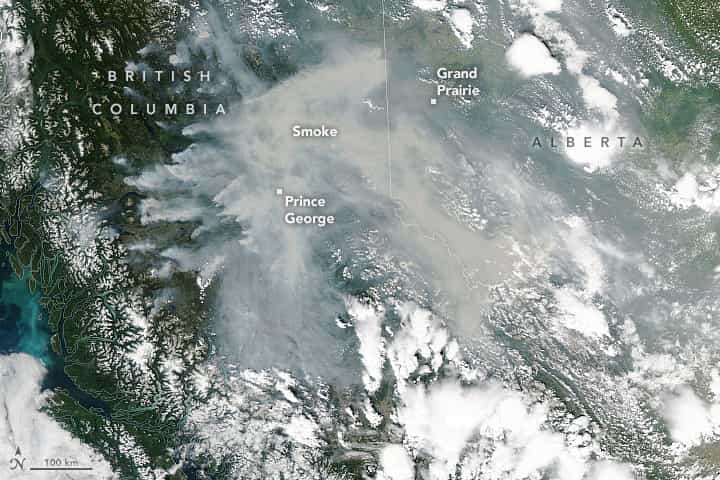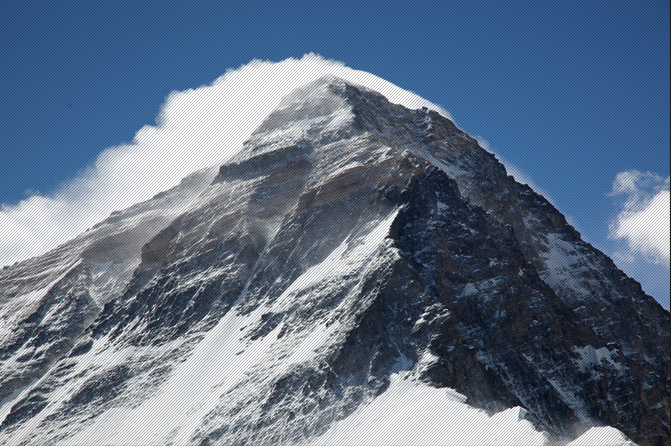
In July 2023, a combination of unusual heat, dry lightning, and drought fueled major outbreaks of fire in Canada. According to the Canadian Interagency Forest Fire Center(CIFFC), nearly 600 out-of-control fires burned throughout the country on July 13, with about half of these raging in British Columbia or Alberta.
The Moderate Resolution Imaging Spectroradiometer (MODIS) on NASA’s Aqua satellite captured the image above on July 12, 2023. Dense plumes of smoke billowing from several of the largest fires streamed east, prompting Environment Canada to issue air quality warnings for several communities in British Columbia, Alberta, and the Northwest Territories.
Several blazes in British Columbia have produced smoke-infused storm clouds known as pyrocumulonimbus (pyroCb) in recent weeks, though the features are not apparent in this image. Scientists track these towering, heat-generated storms closely because they loft smoke high in the atmosphere where fast-moving upper-level winds spread the smoke widely.
“We observed 14 pyroCbs with satellites on July 9-10 alone—several in British Columbia and some in Quebec,” said David Peterson, an atmospheric scientist with the U.S. Naval Research Laboratory. “This surge in activity has made 2023 the most active year for pyroCbs both in Canada and worldwide since we began tracking their numbers closely about a decade ago.” As of July 13, with about six weeks left in the Canadian fire season, Peterson and colleagues had observed 90 pyroCbs in Canada and 104 worldwide in 2023. The previous records, both set in 2021, were 50 for Canada and 100 worldwide.
That is not the only remarkable aspect of the fires in Canada. More than 1.2 million hectares (3 million acres) had burned in British Columbia as of July 12 , 2023, roughly 30 times the average for that point in the year.
The large amount of burned area in British Columbia contributed to record-breaking burned area totals at a national scale. Across Canada, fires had charred 9.4 million hectares as of July 12, an area about the size of the state of Indiana. That is well ahead of the 7.1 million hectares burned in 1997, the second-highest year on the CIFFC record. A major outbreak of fire in eastern Canada in June also contributed to the high numbers.
This post first appeared on NASA Earth Observatory. NASA Earth Observatory image by Lauren Dauphin, using MODIS data from NASA EOSDIS LANCE and GIBS/Worldview. Story by Adam Voiland.




